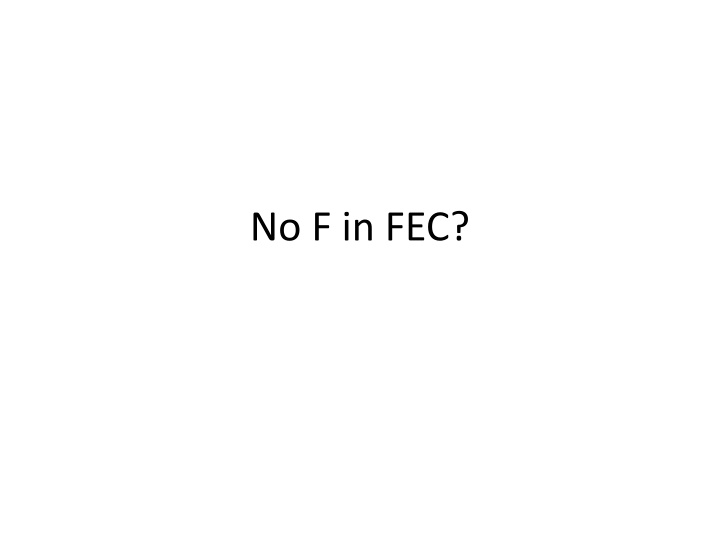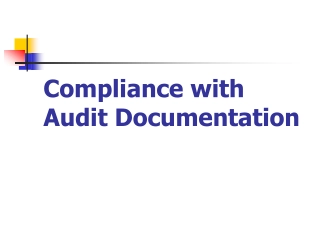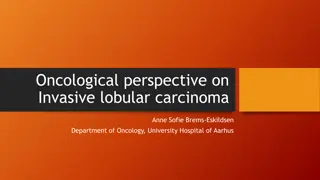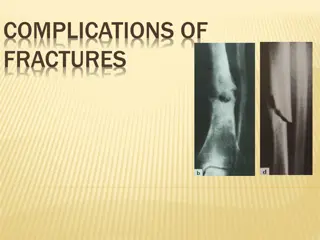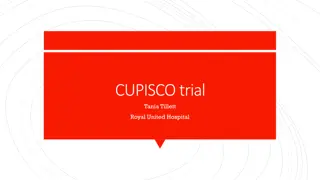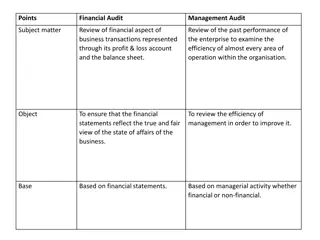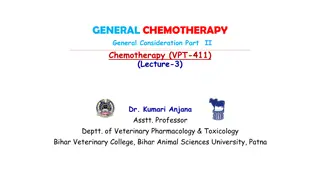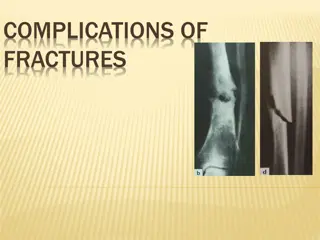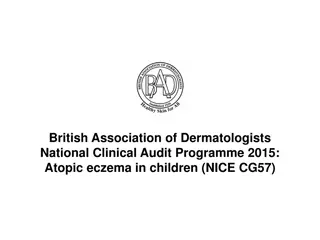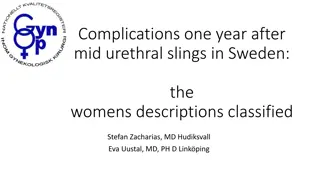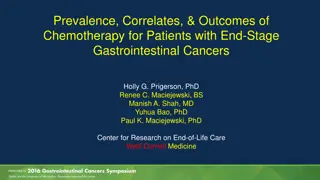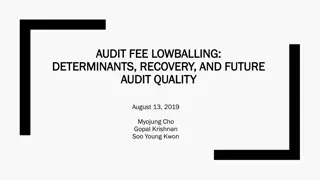Reduced Rates of Severe Complications in EBC Chemotherapy Audit
This content discusses the reduced rates of severe complications in Early Breast Cancer (EBC) chemotherapy, highlighting findings from an internal audit conducted at Marsden. The audit observed significant reductions in severe complications when transitioning from FEC-T to EC-wP or EC-aP regimens in low-risk patients. The retrospective review included outcomes and survival data, addressing factors like toxicity, thromboembolic disease, febrile neutropenia, and patient performance status. Questions remain regarding treatment outcomes, varying Epirubicin doses, use of GCSF, and identifying the highest risk factors for severe complications.
Download Presentation

Please find below an Image/Link to download the presentation.
The content on the website is provided AS IS for your information and personal use only. It may not be sold, licensed, or shared on other websites without obtaining consent from the author.If you encounter any issues during the download, it is possible that the publisher has removed the file from their server.
You are allowed to download the files provided on this website for personal or commercial use, subject to the condition that they are used lawfully. All files are the property of their respective owners.
The content on the website is provided AS IS for your information and personal use only. It may not be sold, licensed, or shared on other websites without obtaining consent from the author.
E N D
Presentation Transcript
Reduced Rates Of Severe Complications in EBC Chemotherapy Marsden internal audit FN 35% with FEC-T (19% overall) 7% TE Changed to EC-wP or EC-aP or EC (low risk) Audit 365 eligible consecutive patients FN 3.8% , 9.9%, 6.8% respectively PS 0 - 1
Reference 1 S. Redana, A. Sharp, H. Lote, K. Mohammed, E. Papadimitraki, M. Capelan, A. Ring Rates of major complications during neoadjuvant and adjuvant chemotherapy for early breast cancer: An off study population The Breast 30 (2016) 13 - 18
Context Retrospective review in large tertiary referral centre 325 patients adjuvant/neoadjuvant FEC100-T x 6/ FEC 75 x 6/ ECaP x 8
Outcomes and Survival Not addressed 22 month follow up 0.6% died from complications 1 patient c5 FEC infection and PE 1 patient c4 neoadj ECaP PE 2.5% died breast cancer 3.4% alive with metastatic disease
Toxicity Thromboembolic disease 24 patients Central access 18% vs 6% peripheral access Febrile neutropaenia Poor performance status (47% ECOG>= 2 vs 18%) Low initial neutrophil count (3.6 vs 4.2) FEC-T 35% 53% during FEC cycles (no GCSF) 33% after cycle 4 (GCSF)
Questions No treatment outcomes Different doses of Epirubicin GCSF variable use Highest risk for FN was poor PS but only 15 patients
Reference 2 Henri Roch et al Sequential Adjuvant Epirubicin-Based and Docetaxel Chemotherapy for Node-Positive Breast Cancer Patients: The FNCLCC PACS 01 Trial JCO Vol. 24 number 36 Dec 20 2006 5664 - 5670
Context 1,999 patients with node positive breast cancer RCT 18 64 PS 0 or 1
Regimen FEC x 6 (500/100/500) FEC x 3 followed by Docetaxel (100)
Outcome 5 years DFS FEC 73.2% vs FEC-T 78.4% OS FEC 86.7% FEC-T 90.7%
Toxicity Febrile Neutropaenia FEC 8.2% FEC-T 11.2% (note all PS 0 or 1)
Reference 3 Samuel JA, Wilson JW, Bandos H et al. NSABP B-36: A randomized phase III trial comparing six cycles of 5-fl uorouracil (5-FU), epirubicin, and cyclophosphamide (FEC)to four cycles of adriamycin and cyclophosphamide (AC) in patients (pts) with node-negative breast cancer. Cancer Res 2015; 75:S3-02.
Full reference Comparison of efficacy of neoadjuvant chemotherapy FEC 100 and Docetaxel 75 versus AC and Docetaxel in locally advanced breast cancer: a randomized clinical study Dhanraj et al Med Oncol (2015) 32:261
Context 148 neoadjuvant locally advanced patients 74 AC-T (group 1) (total 7 cycles) 74 FEC-T (group 2) (total 8 cycles) Assess response and toxicity of different regimen in neoadjuvant setting PS 0 - 1 Powered to pick up 3% difference in pCR RCT
Outcomes 4 progressed group 1, 2 group 2. 2 treatment deaths each group. 1 default in each group Clinical response Group 1 20% CR 85% response Group 2 30% CR 82% response p=0.24 pCR 31% Group 1 34% Group 2 p=0.87
Survival Median OS and PFS not reached at 2 years No significant difference between 2 groups
Toxicity Neutropaenia all grades Group 1 50% Group 2 60% p=0.2 Neutropaenia grade 3 and 4 Group 1 35% Group 2 16% p=0.02
Conclusions ? comparable regimes Reduced grade FN with FEC-T (but 75mg/m2 docetaxel as opposed to 100mg/m2) ?Underpowered
Do we want 5-FU? Insufficient evidence to lose it Non comparable regimes Seemingly evidence for increased and decreased neutropaenia rates with FEC as opposed to EC and AC
